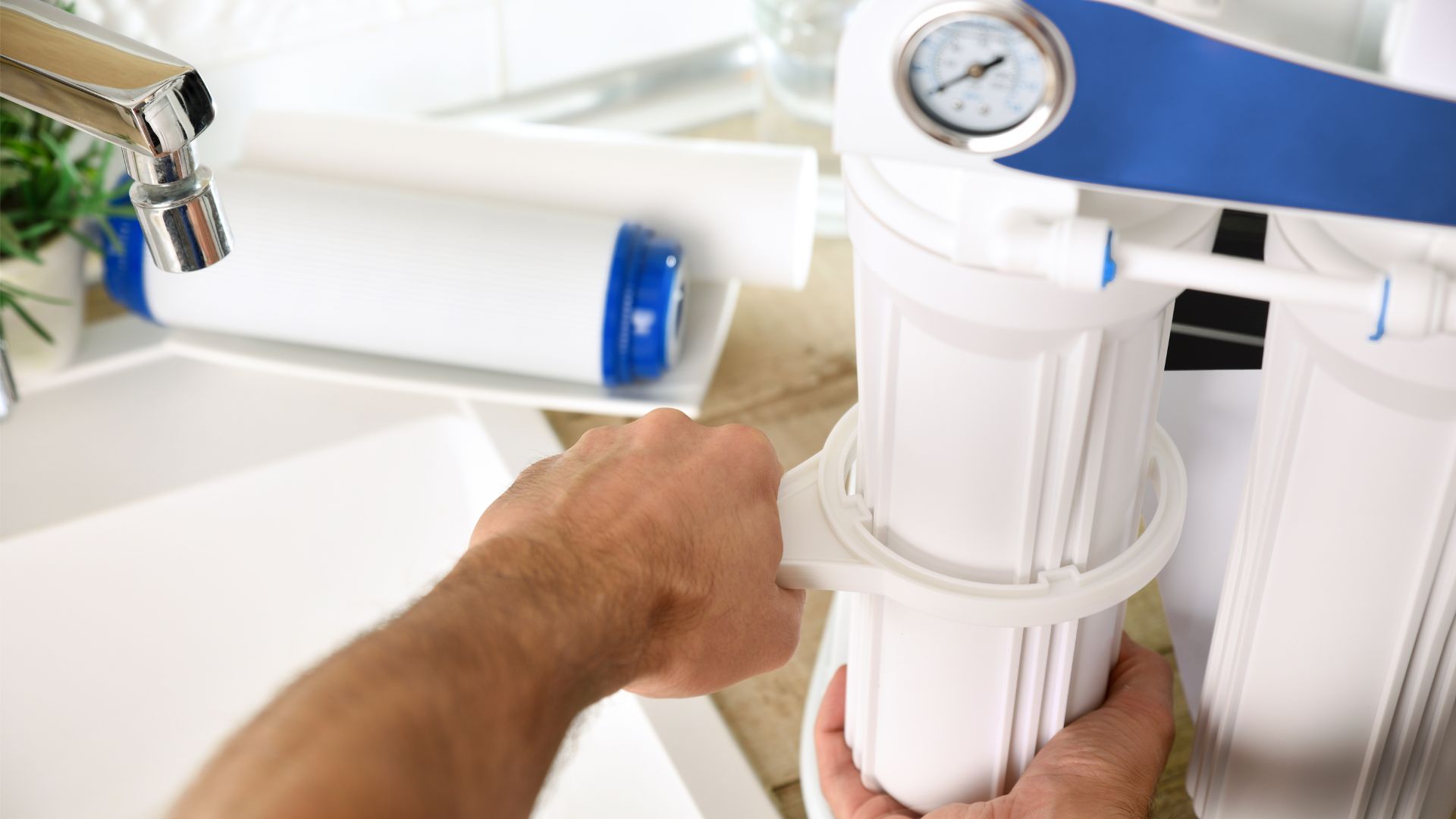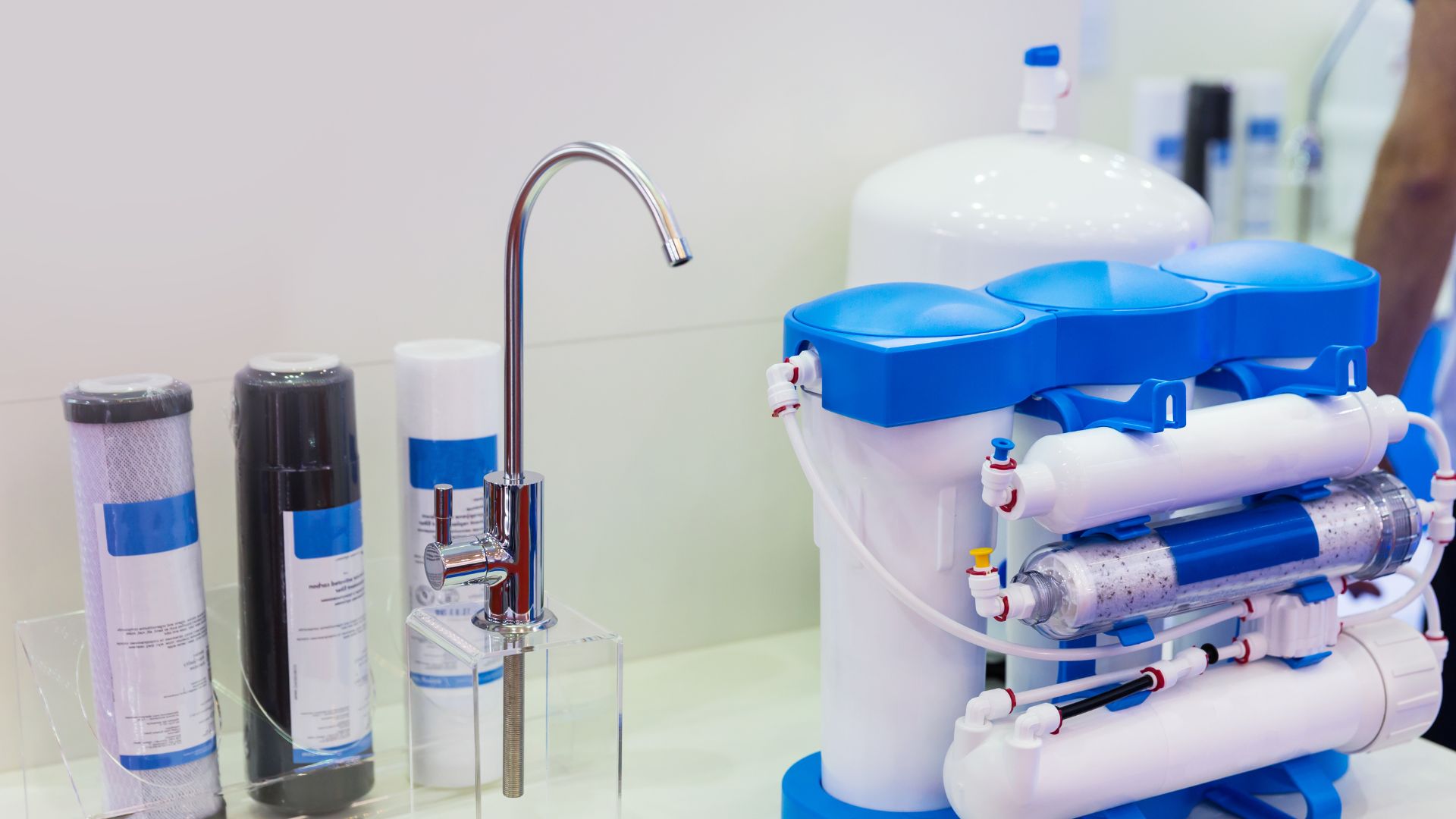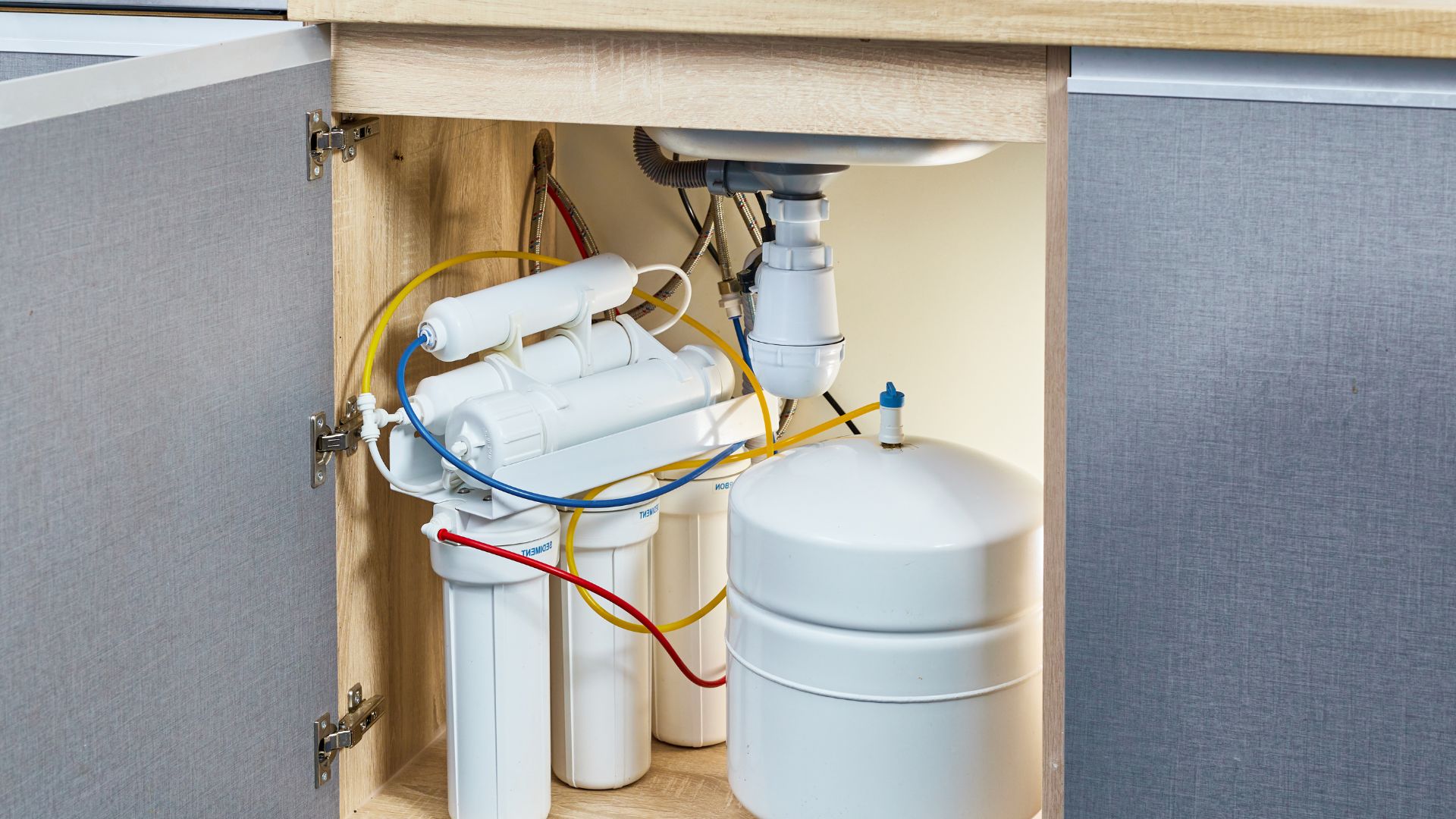Clean water is crucial for our well-being, but a lot of places in Australia still struggle with quality. A study showed that in 2018-2019, around 25,245 people in 99 small areas were using water that didn’t meet health standards. If you include larger towns, you’re looking at about 194,572 people across 115 locations. What’s even more worrying is that over 627,736 people in 408 areas, many from remote Indigenous communities, are dealing with water quality issues. These figures hint that there may be more cases of non-compliance with the Australian Drinking Water Guidelines (ADWG) than officially reported. Clearly, there’s a big need for better solutions.
Reverse osmosis (RO) is a key technology in addressing water quality challenges. RO systems purify water by removing contaminants through a semipermeable membrane, ensuring safe and clean drinking water. This process is highly effective in eliminating impurities, including harmful chemicals and microorganisms, making it an ideal choice for improving water quality in households.
In this blog, we’ll dive into the many perks of using reverse osmosis systems at home. If you get clued up on the benefits, you’ll find it easier to choose what’s best for ensuring your family has top-notch water quality. From boosting your health to saving you a few bucks, see how RO systems can change your home’s water game.
Exploring Reverse Osmosis
Reverse osmosis is a highly effective water filtration method used to provide pure drinking water by removing harmful contaminants. This environmentally friendly solution enhances water quality, offering numerous health benefits.

Definition and Process
Reverse osmosis works by using a reverse osmosis membrane, a semi-permeable membrane, to filter out dissolved substances, heavy metals, and harmful bacteria from tap water. The reverse osmosis process involves multiple stages of filtration:
- Sediment Filter: Removes large particles and sediment.
- Activated Carbon Filter: Eliminates chlorine and other chemicals.
- Reverse Osmosis Membrane: Filters out the smallest contaminants, including brackish water impurities.
- Post Carbon Filter: Polishes the water for taste.
Reverse osmosis water filters are known for producing clean, potable water, making them an excellent choice for household drinking water.
Components
An RO system comprises several essential parts:
- RO Unit: The core component where the reverse osmosis filtration occurs.
- RO Membrane: The heart of the system that removes contaminants.
- Storage Tank: Holds the purified water until needed.
- RO Faucet: Delivers filtered water directly to your sink.
- RO Filters: Include sediment and carbon filters for pre and post-filtration stages.
These components work together to ensure the production of reverse osmosis water, which is free from harmful substances.
Comparison
Reverse osmosis systems stand apart from other filtration methods like osmosis filters and activated carbon filters. The latter are great at removing chlorine and odours, but they fall short when it comes to getting rid of dissolved stuff—something RO filters do well. And rather than relying on thermal energy, reverse osmosis systems cleverly use water pressure to separate water molecules from nasties.
While the benefits of reverse osmosis are significant, there are some cons of reverse osmosis, such as water waste and the removal of beneficial minerals. However, many users prefer drinking reverse osmosis water over purchasing bottled water due to its purity and the reduction of contaminants in comparison to other water filtration systems.
Health Benefits of Reverse Osmosis
Reverse osmosis systems offer significant health benefits by improving water quality and safety. These systems use advanced filtration methods to ensure clean and appealing drinking water.
Contaminant Removal
Reverse osmosis filters are highly effective at removing a wide range of impurities. Through the reverse osmosis process, a semi-permeable membrane filters out harmful contaminants such as lead, chlorine, and bacteria. This filtration process is crucial in eliminating heavy metals and other pollutants found in tap water.
By using reverse osmosis filtration systems, households can transform contaminated water into safe, pure drinking water. The reverse osmosis water filter ensures that even the smallest water molecules pass through, leaving behind harmful substances and providing a reliable water purification solution.
Improved Taste and Odour
One of the most noticeable benefits of reverse osmosis water is the enhanced taste and odour. Reverse osmosis water systems effectively remove chlorine and other chemicals that can affect the flavour of tap water.
As a result, filtered water from an RO system tastes fresh and clean, making it a preferable choice over bottled water. The water filtration system not only improves the taste but also ensures that drinking water is free from any unpleasant odours, enhancing its overall appeal.
Support for Health Conditions
Drinking reverse osmosis water can be particularly beneficial for individuals with specific health concerns. The removal of contaminants such as heavy metals and bacteria makes reverse osmosis water good for those with weakened immune systems or allergies.
While the cons of reverse osmosis include the removal of some essential minerals, the benefits of reduced exposure to harmful substances outweigh these disadvantages for many people. Reverse osmosis water filtration supports better health by providing a consistent supply of clean water, which is crucial for maintaining overall well-being.
Environmental Impact of Reverse Osmosis
Reverse osmosis systems offer an eco-friendly alternative to traditional water sources, significantly impacting the environment positively.
Reduction in Plastic Waste
Using reverse osmosis filtration systems can greatly reduce reliance on bottled water. By installing a reverse osmosis system at home, households can produce clean, filtered water directly from the tap. This reduces the need to purchase bottled water, which contributes to plastic waste. As more people choose to drink reverse osmosis water, the demand for plastic bottles decreases, leading to less environmental pollution.
Sustainability
Reverse osmosis systems are a sustainable choice compared to other water filtration methods. The reverse osmosis filtration process uses a semi-permeable membrane to remove contaminants from tap water, providing a continuous supply of purified water without the need for single-use plastics. Although there are cons of reverse osmosis, such as the removal of healthy minerals, the overall environmental benefits are significant.
RO systems operate using water pressure, which is an energy-efficient filtration method. While the disadvantages of reverse osmosis include potential water waste, the reduction in plastic usage offsets these drawbacks. The ro water filters and reverse osmosis filters ensure that even contaminated water becomes safe to consume, reducing the need for alternative and less sustainable water sources.
Incorporating reverse osmosis filtration into daily life promotes a greener lifestyle. By choosing this filtration method, individuals contribute to a reduction in plastic waste and support a more sustainable future.
Economic Advantages of Reverse Osmosis
Investing in a reverse osmosis system can lead to substantial financial savings over time, making it a wise economic choice for households.
Cost-Effectiveness
Installing a reverse osmosis system is initially more expensive than buying bottled water, but it offers significant long-term savings. With a reverse osmosis filtration system, you can enjoy unlimited access to clean RO water, eliminating the recurring expense of purchasing bottled water.
When water flows through a reverse osmosis filter, it comes out pure and clean, costing you way less. The RO process keeps your water consistently safe, cutting back the need for pricey alternatives.
Maintenance and Lifespan
RO systems are known for their durability and low maintenance costs. An RO system typically requires only periodic changes of the RO filter, which are relatively inexpensive compared to other water purification methods.
The longevity of a reverse osmosis system contributes to its cost-effectiveness, as it can last many years with minimal upkeep. While there are some disadvantages of reverse osmosis, such as the initial setup cost, the low maintenance requirements make it a practical option for consistent water filtration.
Installation and Maintenance of Reverse Osmosis Systems

Ease of Installation
Installing a reverse osmosis system is straightforward and typically requires a few hours. The process involves connecting the RO system to the water supply, installing the reverse osmosis filter under the sink, and setting up the dedicated faucet.
Generally, setting up a reverse osmosis system is a manageable task, but getting a professional in can ensure it’s done right. You’ll need to connect everything to your water supply, get the filter settled under the sink, and sort out the dedicated faucet. Even if you’re handy with basic plumbing, a pro can help sidestep issues, ensuring it runs like a dream and saving you from costly blunders.
Simple Upkeep
Maintaining a reverse osmosis system is simple and ensures its efficiency and longevity. Here are some tips:
- Regular Filter Replacement: Depending on usage and water quality, change the RO filter and other filters every 6-12 months.
- Sanitise Annually: Clean and sanitise the system once a year to prevent bacterial growth.
- Check for Leaks: Regularly inspect connections and tubing for any signs of leaks.
- Monitor Water Pressure: Ensure that water pressure is optimal for the system to function effectively.
Common Misconceptions About Reverse Osmosis Systems
Quality and Taste
A common myth about reverse osmosis systems is that they negatively affect water quality. In reality, reverse osmosis filtration enhances water quality by removing impurities such as chlorine, lead, and bacteria. This process improves both the taste and safety of the water. Some believe that RO water may taste flat, but this is due to the absence of contaminants and additives, resulting in a cleaner, purer taste compared to tap water.
Mineral Content
Another misconception is that reverse osmosis removes essential minerals, making the water less healthy. While it’s true that RO systems filter out minerals, the primary purpose is to eliminate harmful contaminants. The amount of minerals removed is minimal and typically available through a balanced diet.
Plus, the health benefits of removing pollutants outweigh concerns about mineral loss. For those concerned, remineralisation filters can be added to restore certain minerals and enhance taste.
Making the Right Choice
Choosing the right reverse osmosis system requires understanding your specific needs and water conditions. Here’s a guide to help you evaluate them effectively.

Water Quality
Begin by testing your tap water to identify contaminants such as chlorine, lead, or bacteria. Knowing the specific impurities present will help you determine the type of reverse osmosis system you need. Some areas might have higher levels of certain contaminants, which could influence your decision.
Household Size and Usage
Consider the size of your household and daily water consumption. Larger families will require a system with a higher capacity to ensure a constant supply of clean water. Evaluate how much RO water you typically use for drinking, cooking, and other purposes to avoid running out.
Space and Installation
Assess the space available under your sink to accommodate the RO system. Measure the area to ensure the unit fits comfortably. Some systems may require professional installation, while others are designed for easy DIY setup. Choose plumbing tasks according to your comfort level.
Additional Features
Think about any extra features you might need. A remineralisation filter can enhance the taste of the water by adding back beneficial minerals. If taste is a priority, consider a system that includes this option.
Budget and Maintenance
Set a budget that includes the initial cost and ongoing maintenance expenses. Quality systems can offer long-term savings compared to purchasing bottled water. Factor in the cost of replacement filters and regular maintenance to keep the system running efficiently.
By thoroughly considering all these factors, you’ll be in a great spot to choose an RO system that perfectly suits your needs, guaranteeing a steady flow of safe, clean drinking water at home.
Pure Satisfaction Awaits
Imagine enjoying the pure satisfaction of clean, safe water every day. With the benefits of reverse osmosis systems fresh in mind, now is the perfect time to make an informed decision for your home. Investing in a reverse osmosis system means prioritising your health, enhancing water taste, and contributing to a more sustainable environment by reducing plastic waste.
At Fixed Today, we specialise in expert water filter services tailored to your specific needs. Our team is dedicated to providing superior service and solutions, ensuring you experience the full benefits of high-quality water filtration. Whether you need assistance with installation, maintenance, or choosing the right system, we’re here to help.
Don’t wait any longer to transform your water quality. Contact Fixed Today to explore our range of water filtration options and discover the perfect solution for your household. Experience the difference that expert service and personalised care can make. Reach out to Fixed Today and take the first step towards pure satisfaction.














